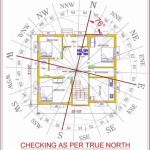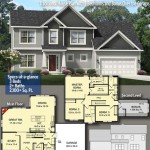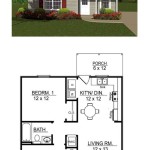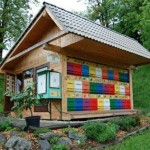Dutch Colonial Gambrel House Plans: A Timeless Architectural Gem
Dutch Colonial Gambrel houses, with their distinctive symmetrical facades and graceful gambrel roofs, have captured the hearts of home enthusiasts for centuries. These stately dwellings, originally introduced by Dutch settlers in the 17th century, continue to inspire modern homebuilders seeking a blend of history, charm, and functionality.
The Signature Gambrel Roof
The defining characteristic of Dutch Colonial Gambrel houses is their gambrel roof. This distinctive roofline features two slopes on each side, creating a distinctive "barn-like" appearance. The lower slope is steep, providing ample attic space, while the upper slope is gentler, allowing for light to enter the upper floor. The gambrel roof not only enhances the house's architectural aesthetic but also provides practical benefits.
Charming Symmetrical Facade
Dutch Colonial Gambrel houses typically showcase a symmetrical facade, exuding a sense of balance and order. The central entrance is flanked by windows on each side, creating a harmonious visual appeal. The windows often feature diamond-shaped panes, adding to the house's historic character. The symmetrical facade creates a welcoming and inviting atmosphere.
Spacious and Functional Floor Plans
Despite their historic origins, Dutch Colonial Gambrel houses offer surprisingly spacious and functional floor plans. The first floor typically includes a formal living room, dining room, and kitchen, as well as a half-bath. The upper floor features bedrooms, often with sloped ceilings adding character and charm. The gambrel roof allows for large windows on both floors, providing plenty of natural light.
Traditional Materials and Details
Dutch Colonial Gambrel houses embrace traditional materials and details that evoke their heritage. The exterior is typically constructed using brick, clapboard siding, or a combination of both. The windows feature intricate molding, while the front door may be adorned with a transom window or sidelights. The use of these traditional elements enhances the house's historic appeal.
Modern Amenities and Customization
While Dutch Colonial Gambrel houses retain their historic charm, modern homebuilders can incorporate contemporary amenities to enhance livability. Kitchens can be updated with sleek appliances and granite countertops. Bathrooms can feature luxurious fixtures and spa-like amenities. Customizable floor plans allow for open-concept living areas and private balconies, creating a blend of old-world charm and modern comfort.
Historical Legacy and Timeless Appeal
Dutch Colonial Gambrel houses hold a special place in American history, representing the architectural heritage of the early settlers. Their timeless design and functionality continue to resonate with families seeking a home that exudes both charm and practicality. Whether built true to the original style or updated with contemporary touches, Dutch Colonial Gambrel houses remain a beloved architectural treasure, offering a captivating blend of history and modern living.

Dutch Colonial Revival House Plan Design 14134 B 1925 C L Bowes Co Plans Homes

Home Plan Dutch Colonial C 1923 L Bowes 12322 B House Plans Exterior

1930 Practical Homes Colonial House Plans Dutch

1923 Dutch Colonial Revival Gambrel Roof Morgan Building With Assurance Catalog No 47 A House Plans Style

Gambrel Roof Colonials 1923 Dutch Colonial Revival Morgan No 39 A Homes

1918 Dutch Colonial Revival Style Gambrel Roof Model No 704 Gordon Van Tine Kit Homes

1922 Clarendon By Bennett Homes Dutch Colonial Revival Style Gambrel Roof Kit Houses House Plans

Dutch Colonial Revival 1931 Aladdin Homes Gambrel Roof Style

Dutch Colonial Revival 1916 Rembrandt International Mill Timber Sterling System Homes Gambrel Roof

Style Spotting On Main Street Part 2 Dutch Colonial
Related Posts








